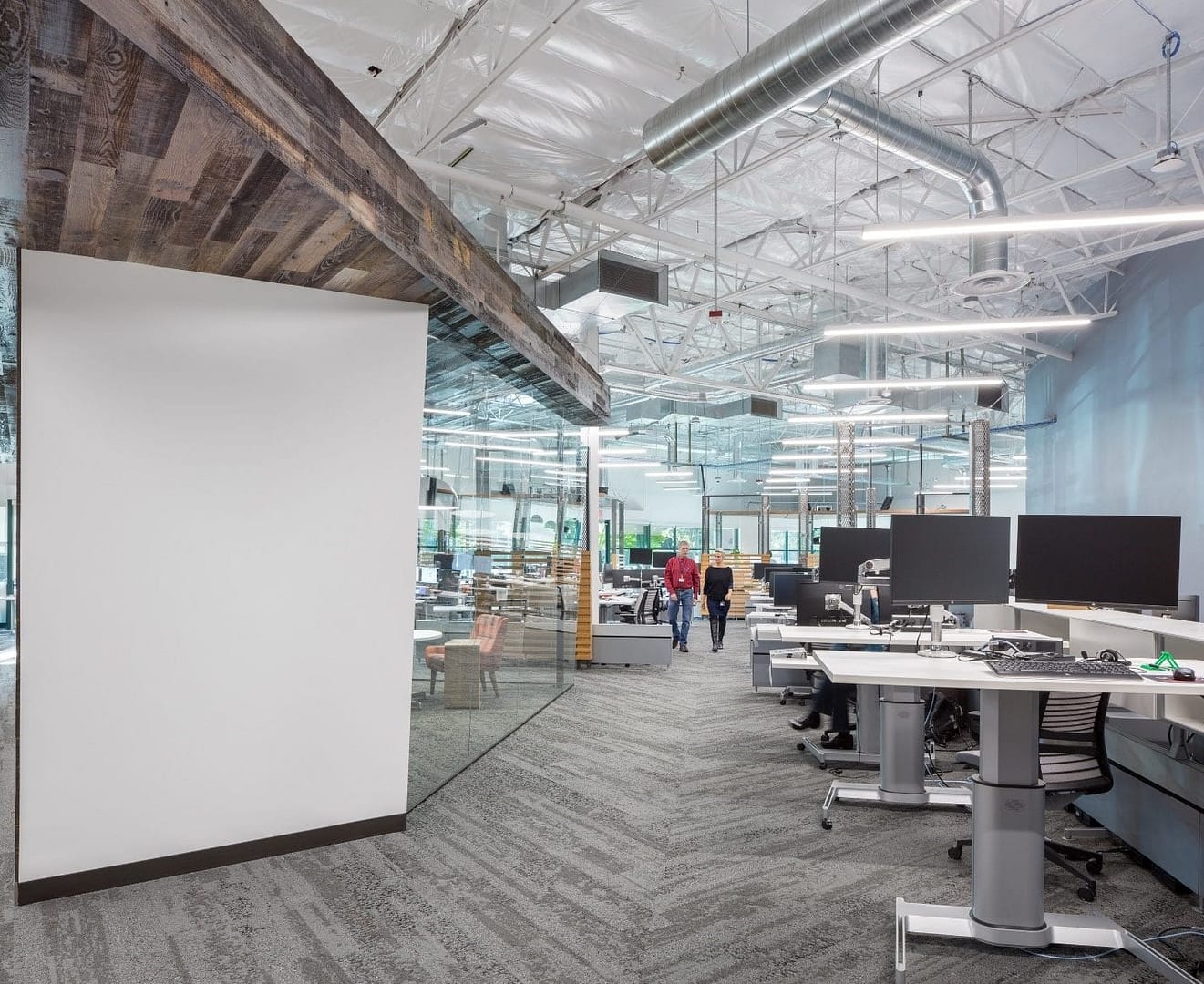By Sarah Brophy, IIDA, LEED AP | Design Director
February 8, 2019
As designers of work environments, our approach to planning over the last few years has centered on activity-based work. With this approach an organization’s cultural DNA is understood and their work patterns are mapped across the floorplate to offer a range of tailored work settings. While designing for activity-based work has been effective, its success is premised on the end-user’s desire and need for mobility. But what if we applied this approach on a more granular level and asked how individual users can optimally move and interact with their personal workspace?
User optimization at the personal level is readily becoming a key concept throughout all aspects of design and across vertical markets. Retail is a good example where shoppers are encouraged to co-create and cultivate their experience. Look at Converse and Reebok—you are invited into the store to become part of the process and can design your own unique shoes, an inclusive experience that highlights the power of personal engagement. Co-creation in the workspace, where users want to become part of the process driving their workplace experience and environments, is now a defining aspect of the optimum work environment. Certainly, through responsive technologies the possibilities for co-creation will be pushed even further. Will meeting rooms and other aspects of the workspace respond to your personal preference, possibly through an app?

Activity-based work is premised on the end-user’s desire and need for mobility. Hewlett Packard, Vancouver, WA. Photography © Josh Partee.
Human Capital: Satisfaction Counts
For many of our consumer brand clients, intellectual capital is the prized commodity. Expensive, creative, and hard to retain it demands an exceptional human experience at the personal level where co-creation and satisfaction can be critical, sometimes out-weighing the attraction and wow factor of impressive amenity spaces.
From this perspective, as designers we are being pushed to create workstations that in effect become dynamic organisms, effortlessly responsive and sensitive to users’ changing needs and encouraging co-creation. Putting human comfort and ease at the forefront, we have concentrated our attention on the area where many staff spend much of the day: their desk.
The Bespoke Workstation
The craving for a bespoke workstation, for some users an absolute necessity, inspired IA’s creation of a kit-of-parts solution (you’ve heard that phrase before but in this context it is definitely something new) that individual users can arrange in countless radical ways without outside help, based on daily preferences, weekly deadlines, or monthly project workflows. For one high-tech client, a global developer of cutting-edge consumer electronics, individual workstations had to accommodate a significant array and quantity of materials—nuts, bolts, components, wires, actual hardware—at the fingertips of each genius-maker who was physically engaged with designing a range of products. This workplace had to be nimble in every respect, with workstations reconfigured and repositioned at an impressive pace to handle both individual and collaborative work. With absolute ease, the workstation design had to support how work happens, spontaneous or planned, in an environment of constant change intrinsically tied to product development. Had we failed, frustration at the user level would not only slow production and curtail creativity but undermine the morale of a talent pool that would be hard to duplicate. Empowerment was a strategic necessity in this setting, requiring desks that could be turned 360 degrees at will, with storage and tool boxes (that actually house tools for this client) easily repositioned.
The concept of user control can expand beyond the workstations to squad and team spaces. Through the use of demountable walls, video screens, and simple whiteboards these spaces can flex and contract as needed without requiring an infrastructure change.
Challenges: Thinking Outside the Box
Our approach has not been without challenges. Much like the client needs that drive us to think outside the box, we’re pushing systems manufacturers to consider what it means to have a workstation infinitely responsive to user-need ebb and flow without the intervention of facilities management. Standard systems components offer further challenges in terms of finish options. Often our solutions must be custom within standard product offerings and come at a cost. As users are customizing how their personal space works, they are also pushing for materials that are more evocative of home. Many manufacturers are not there yet.
Electricity is another challenge. Power is not wireless. I work in Boston where many buildings are old. Few have raised floors, an expensive option to retrofit, which can limit solutions and tie mobility to a workstation spine.
Retaining Human Capital
Inevitably, the question of how much customization is too much comes up. It’s true that creative workers are going to create regardless; it is who they are and what they do. But if the success of your enterprise depends on intellectual capital, you will want the best human capital working for you and eager to stay. In essence that concept is universal, businesses want to retain the optimum workforce and it is compellingly apparent that one way to attract the best and the brightest is to enhance the personal human experience at work.

An emphasis on wellness helps employees be at their best. Confidential Client, Chicago Photography © Garrett Rowland.
A palette of spaces that accommodates all types of work patterns, a design that speaks to inclusiveness and inspires, areas for respite and decompression, and an emphasis on wellness are all factors that contribute to employees being their best and doing their best work. Without a doubt, a focus on the quality of the human experience at work at the individual level is a clear forecast for workspace design in 2019.

Opportunities to decompress are an important part of the work day. Virgin Voyages Headquarters, Plantation, Florida © Robin Hill.
